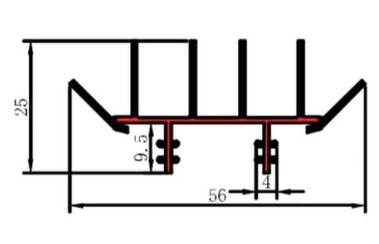Oct . 11, 2024 16:40 Back to list
garage door exterior weather stripping
Weather Stripping for Garage Door Exteriors A Comprehensive Guide
When it comes to maintaining an efficient and comfortable home, one often-overlooked area is the garage door. The garage door serves as a barrier between the outside elements and your home, making it crucial to ensure that it is properly insulated. One of the best ways to enhance your garage door's insulation is through the installation of exterior weather stripping. This article will cover the importance of weather stripping, the types available, and how to effectively install or replace it.
Importance of Weather Stripping
Weather stripping acts as a seal around the edges of your garage door, preventing air leaks, water intrusion, and debris from entering your garage. This is particularly important for maintaining the temperature inside your garage, which can significantly impact the overall energy efficiency of your home. By reducing drafts and temperature fluctuations, you can potentially lower your energy bills, create a more comfortable workspace, and protect your belongings from damage caused by moisture and pests.
Types of Weather Stripping
There are several types of weather stripping materials available for garage doors
1. Rubber Weather Stripping This is one of the most common and effective materials for garage doors. It's durable, flexible, and can withstand harsh weather conditions. Rubber weather stripping is available in various profiles, including bulb, T, and D shapes, providing effective sealing against air and moisture.
2. Vinyl Weather Stripping Similar to rubber, vinyl is another popular choice. It’s lightweight and easy to install, making it a convenient option for homeowners. While it may not be as durable as rubber, it is often more affordable and can still provide good insulation.
3. Foam Weather Stripping This option is typically used for smaller gaps and areas where flexibility is required. Foam weather stripping is easy to apply and can be cut to fit various sizes, but it may not last as long as rubber or vinyl.
4. Metal Weather Stripping For heavy-duty doors, such as those found in commercial spaces, metal weather stripping can provide excellent strength and stability. However, it may require more complicated installation processes.
garage door exterior weather stripping

Installation Process
Installing or replacing weather stripping on your garage door is a straightforward task that can often be done in a few hours
. Here are the basic steps1. Assess the Current Weather Stripping Inspect the existing weather stripping for wear and tear. If you notice cracks, brittleness, or missing sections, it’s time for a replacement.
2. Choose the Right Material Select a weather stripping material based on your needs and budget.
3. Remove Old Weather Stripping Use a utility knife to carefully remove the old weather stripping from the door frame.
4. Prepare the Surface Clean the area where the new stripping will be applied. Ensure the surface is smooth and free of debris.
5. Measure and Cut Measure the dimensions of your garage door and cut the new weather stripping to the appropriate lengths.
6. Apply the New Weather Stripping Follow the manufacturer's instructions for installation. Most materials either peel and stick or require nails/screws.
7. Test the Seal Once installed, close the garage door and check for any light passing through. If you can see light, you may need to adjust or add additional weather stripping.
In conclusion, weather stripping is a vital component of your garage door system. Ensuring a proper seal can lead to better energy efficiency, comfort, and protection against the elements. So, take the time to evaluate and upgrade your garage door weather stripping—your home will thank you!




